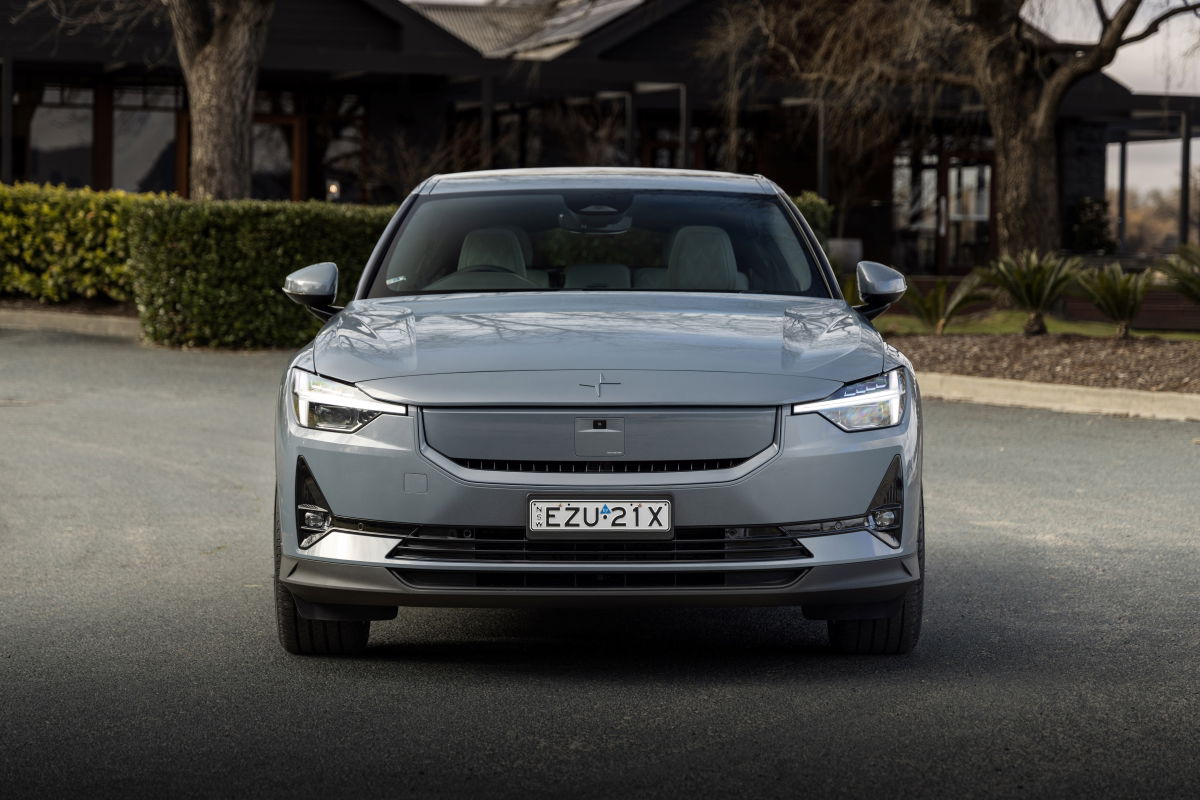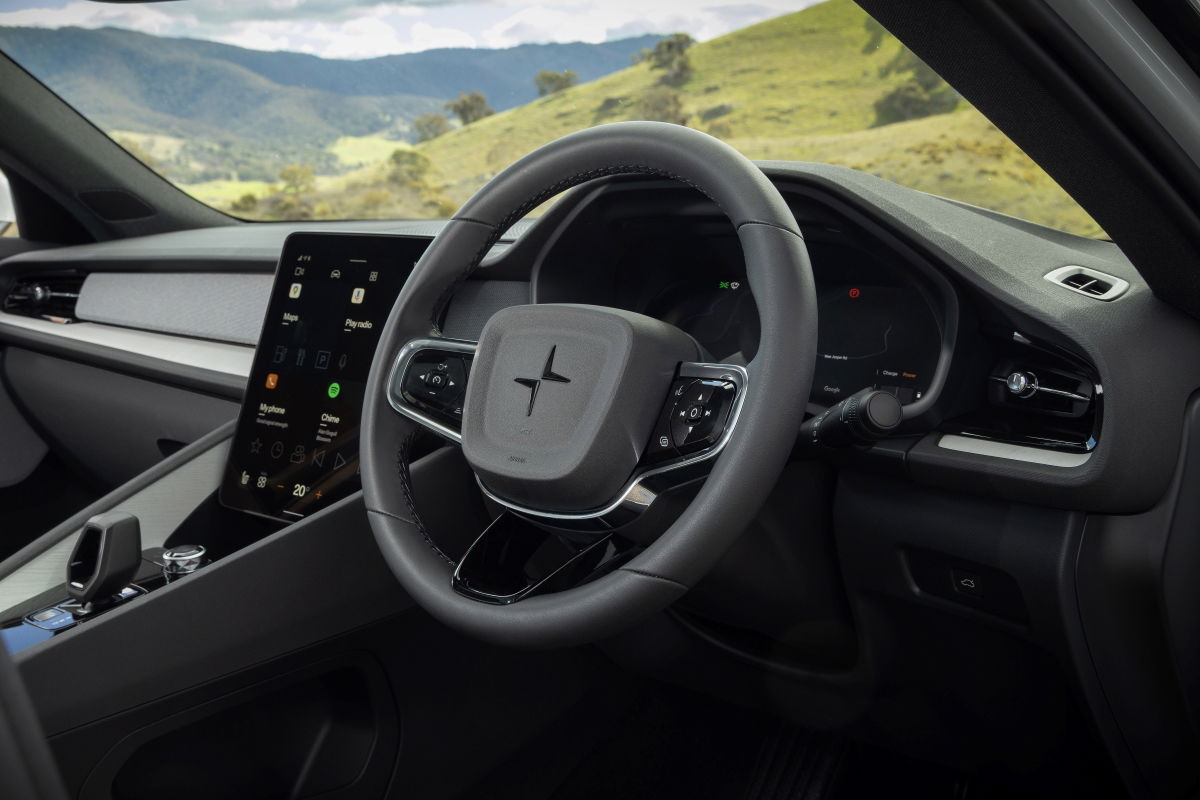
What is it?
A demonstration of how electric vehicles can revolutionise the car industry. Not only does Polestar, the Chinese-owned Volvo spin-off, take a holistic approach to impact on the environment by measuring whole-of-life CO2 emissions, but in this updated Polestar 2 model it has shown just how unconventional EVs can be.
Typically a mid-life update of a new bumper design and some fresh alloy wheels, but the Polestar 2 goes much, much further than that – it’s switched from front-wheel drive to rear-wheel drive. Yes, that’s right, this is an updated model, not a brand new Polestar 2, and it has made a fundamental change to its layout.
How? It’s surprisingly simple – instead of having an electric motor in the front it now has one in the back, which was a straightforward process for Polestar because it already makes a dual-motor all-wheel drive version of the same car.
So, how does this impact the way this new model performs on the road? Read on…
READ MORE: 2022 Polestar 2 review
Does it have any racing pedigree?
Polestar was once Volvo’s performance sub-brand and racing team, the forerunner to what is now known as Cyan Racing. But since Volvo’s Chinese owners, Geely, decided to spin-off Polestar into its own, stand-alone brand, the racing activities have dried up unfortunately.
READ MORE: Is the Polestar O2 Concept the future of sports cars?
What’s under the bonnet?

As mentioned above, there’s nothing under the bonnet because Polestar has dramatically shifted to a rear-mounted motor to power the rear wheels. It’s a new, more efficient motor than the previous Polestar 2 and produces more performance, 220kW and 490Nm (up from 170kW/330Nm).
It’s still not sports car fast, 0-100km/h takes 6.2 seconds, but there’s the dual-motor version for that, with 310kW/740Nm thanks to the addition of the front motor for more power and all-wheel drive.
The new motor is joined by a new 82kW battery that extends the driving range to a claimed 654km, at least on the Long Range variant we tested.
How does it handle?

The change of layout means a new rear-drive bias to the chassis which has been specifically tuned for more driving enjoyment. Not that this is meant to be a sports sedan, but it is a compact car that the company calls both “playful” and “agile” in its literature.
While playful might be a stretch, it’s certainly an agile car, with very direct steering and a firm but responsive chassis. The previous model was too stiff, so much so you’d call it uncomfortable at times, but this new model has had changes to its suspension for a more compliant ride, without dulling its handling. It could still stand to be even more softly sprung over bumps, but when you’re trying to control so much weight that can be a challenge.
Overall I’d call it an enjoyable electric car to drive, with a unique Polestar character to it. The switch to the rear-wheel drive layout does make it feel more dynamic without getting too focused on performance over efficiency and usability.
Where would you most like to drive it?
With more than 600km of range I’d love to see how quickly I could get from one capital city to another. In theory, you should be able to do Sydney to Melbourne on a single recharge – which would be a pretty major achievement in an EV.
What’s the interior like?
Design has always been a standout element of Polestar, with an obvious influence from Volvo creating a uniquely Scandinavian style to both the exterior and interior of each model. While it isn’t the most practical cabin, it is one of the best-looking interiors on the market today (at least in my humble opinion).
There’s a simplicity to the design but the details all look and feel premium. Each material chosen not only looks appealing but the variety of trims creates an interesting array of trims and textures.
Space could be improved, especially in the back, as the Polestar 2 sits atop an existing Volvo platform that was designed for internal combustion engine models. But this is a facelift and not a model change, so that will have to wait until a future date.
How much does the Polestar 2 cost?
The Polestar 2 range begins at $67,400 for the Standard Range Single Motor, while the Long Range Single Motor we tested here starts at $71,400. If you want the hero model, the Long Range Dual Motor Performance Pack then you’ll need at least $85,400.
That does make it more expensive than the BYD Seal and Tesla Model 3, its most direct rivals, it’s in the same range as the Hyundai Ioniq 6 and cheaper than the BMW i4 range.
Would I buy one?

I must admit I have a soft spot for recent Scandinavian cars, modern Volvos have a unique appeal and the expanding Polestar range (the Polestar 3 and 4 are on their way soon) are following suit. While it’s far from perfect, the design of the Polestar 2 really speaks to me and the revised powertrain and layout elevates the drive experience.















Discussion about this post